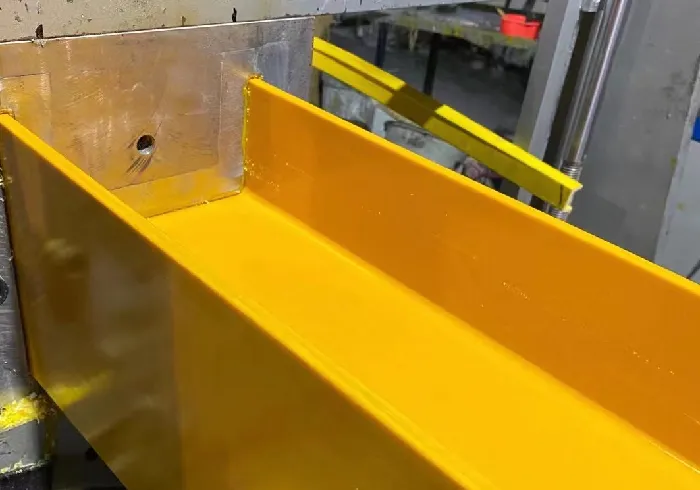loading...
- No. 9, Xingyuan South Street, Dongwaihuan Road, Zaoqiang County, Hengshui, Hebei, China
- admin@zjcomposites.com
- +86 15097380338
- Welcome to visit our website!
Innovative Water Storage Solutions for Urban Environments and Sustainable Development Strategies
The Importance of GRP Water Storage Tanks
Water is an essential resource for every community, and its storage is crucial for both everyday use and emergency situations. Among the many methods of water storage, Glass Reinforced Plastic (GRP) water storage tanks have emerged as a popular choice due to their numerous advantages and versatility. This article explores the significance of GRP water storage tanks and their increasing role in modern infrastructure.
Understanding GRP Technology
Glass Reinforced Plastic, commonly known as fiberglass, is a composite material made from a polymer matrix reinforced with fine glass fibers. This combination creates a lightweight yet highly durable material that boasts excellent strength-to-weight ratio. GRP tanks are manufactured using advanced technologies that allow for high precision and customization, making them suitable for various applications.
Advantages of GRP Water Storage Tanks
1. Durability One of the most significant benefits of GRP water storage tanks is their longevity. Unlike traditional materials such as steel or concrete, GRP does not corrode, rust, or degrade over time when exposed to water and environmental elements. This durability translates into lower maintenance costs and longer service life.
2. Lightweight and Easy to Install GRP tanks are considerably lighter than their concrete or steel counterparts. This characteristic not only simplifies transportation but also reduces the structural requirements for the foundations, leading to lower construction costs. Furthermore, their modular design allows for quick assembly on-site, making them an efficient alternative in emergency scenarios.
grp water storage tank

3. Versatility GRP water storage tanks can be manufactured in various sizes and designs. From small tanks for household use to large-scale reservoirs for municipal water supply, the adaptability of GRP technology caters to diverse needs. Additionally, they can be tailored for specific environments, such as insulated tanks for cold climates or tanks equipped with UV protective layers for outdoor usage.
4. Hygienic and Environmentally Friendly The non-toxic nature of GRP materials makes them an excellent choice for potable water storage. They do not leach harmful substances into the water, ensuring safety for human consumption. Moreover, GRP production often involves environmentally friendly processes, and the tanks themselves can even be recycled at the end of their life cycle.
5. Cost-Effectiveness While the initial investment in GRP tanks may be higher than traditional options, the long-term savings become evident. The reduced need for maintenance, coupled with their prolonged lifespan, means that GRP tanks often prove to be a more economical choice over time.
Applications of GRP Water Storage Tanks
GRP water storage tanks find applications across various sectors. In residential settings, they are commonly used for rainwater harvesting and storage, aiding in sustainable water management. Industries utilize GRP tanks for process water storage, ensuring efficient operations. Municipalities benefit from large GRP reservoirs for public water supply, while agricultural applications include irrigation and livestock water supply.
Conclusion
In an era where water conservation and management are paramount, GRP water storage tanks represent a forward-thinking solution. Their unique combination of durability, cost-effectiveness, and versatility makes them an ideal choice for various applications, from residential to industrial. As communities continue to seek sustainable methods of water storage and management, GRP technology is set to play a critical role in addressing these challenges, ensuring a reliable and safe water supply for future generations.
-
GRP Structures: The Future of Lightweight, High-Performance EngineeringNewsJun.20,2025
-
FRP Water Tank: High-Performance Storage for Corrosive and Clean Water SystemsNewsJun.20,2025
-
FRP Square Tube: The New Industry Standard for Chemical and Structural ApplicationsNewsJun.20,2025
-
FRP Pultruded Profiles: The Ultimate Choice for Lightweight Structural StrengthNewsJun.20,2025
-
FRP Handrails: The Safer, Smarter, and Stronger Choice for Modern InfrastructureNewsJun.20,2025
-
FRP Grating: The Smart Solution for Durable, Lightweight Industrial FlooringNewsJun.20,2025
-
Why Choose a Galvanized Water Tank for Your Storage NeedsNewsMay.21,2025
